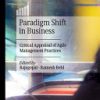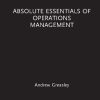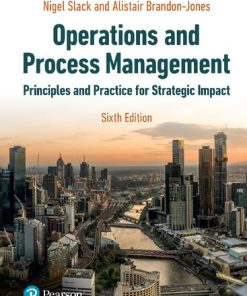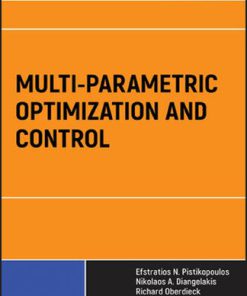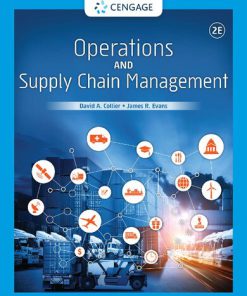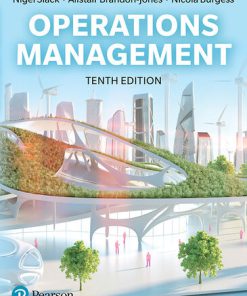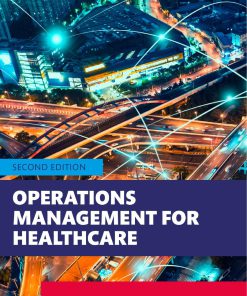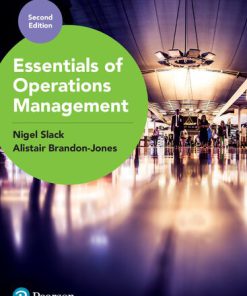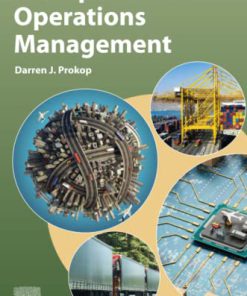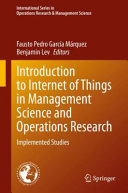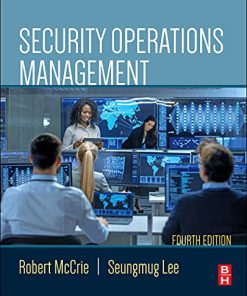Airline Operations and Management A Management Textbook 2nd Edition by Gerald N Cook, Bruce Billig ISBN 9781000870091 100087009X
$50.00 Original price was: $50.00.$25.00Current price is: $25.00.
Airline Operations and Management A Management Textbook 2nd Edition by Gerald N Cook, Bruce Billig – Ebook PDF Instant Download/Delivery: 9781000870091 ,100087009X
Full download Airline Operations and Management A Management Textbook 2nd Edition after payment
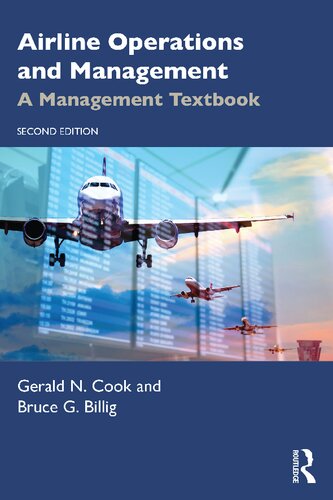
Product details:
ISBN 10: 100087009X
ISBN 13: 9781000870091
Author: Gerald N Cook, Bruce Billig
Airline Operations and Management A Management Textbook 2nd Edition Table of contents:
1 Historical Perspective
1.1 Introduction
1.2 Transportation and Commerce
1.3 The Earliest Airlines
1.4 Regulation
1.5 Government-Supported Airlines
1.5.1 British Airways
1.5.2 Qantas
1.6 US Air Mail
1.7 Economic Regulation
1.8 CAB Economic Regulation 1938 to 1978
1.9 Advances in Aircraft Technology
1.10 Post-War Airline Growth
1.11 The Jet Age
1.12 US Deregulation
1.12.1 The Airline Deregulation Act of 1978
1.12.2 Post-Deregulation Evolution
1.12.3 US Deregulation Results
1.12.4 CAB in Retrospect
1.13 Deregulation in Europe and China
1.13.1 Europe
1.13.2 China
1.13.3 Comparison of Deregulation Outcomes
1.14 Airline Industry Today
1.15 Summary
1.16 Case Study: India
References
2 Supply and Demand for Air Transportation
2.1 Introduction
2.2 Size, Scope, and Economic Importance
2.3 Factors Driving Global Air Transportation Growth
2.3.1 Globalization
2.3.2 Demographics
2.3.3 Regulation
2.3.4 Factors of Production
2.4 Air Cargo
2.5 Forecasting Air Travel
2.5.1 Macroforecasting
2.5.2 Route Level Microforecasting
2.5.3 Demand
2.5.4 Supply
2.6 New Route
2.7 Summary of Factors Affecting Airline Demand and Supply
2.8 Summary
2.9 Case Study: JetBlue to London
References
3 Route Structure
3.1 Introduction
3.2 History
3.3 Generic Route Structures
3.4 Linear
3.5 Point-to-Point
3.5.1 Fast, Cheap, and Independent
3.5.2 Limited to Large Markets
3.5.3 Example: Ryanair
3.6 Hub-and-Spoke
3.6.1 Operation
3.6.2 American Airlines Dallas-Ft. Worth hub
3.6.3 Advantages
3.6.4 Disadvantages
3.6.5 Bottom Line
3.7 Hub Airport Requisites
3.7.1 Legal, Financial, and Capacity Restrictions
3.7.2 Hub Failures
3.8 Hybrid Route Systems
3.9 Hub-and-Spoke Variations
3.9.1 Multiple Hubs
3.9.2 Directional Hub-and-Spoke Systems
3.9.3 Rolling Hub
3.9.4 Focus Cities
3.9.5 Tailored Complexes
3.10 Competing Hub and Spoke Systems
3.11 Evolving Routes Systems
3.12 Summary
3.13 Case Study: United and American Airlines’ Fickle Domestic Route Systems
References
4 Product Offering
4.1 Introduction
4.2 Strategic Choices
4.2.1 The Marketing Concept
4.2.2 Generic Strategies
4.2.3 Industry Evaluation: Porter’s Five Forces
4.2.4 Dimensions of Product Choice
4.3 Full-Service Network Carriers
4.3.1 Product Range
4.3.2 FSNC Example: Delta Air Lines
4.4 Regional Airlines
4.4.1 FSNC Affiliated Regional Airlines
4.4.2 Regional Airline Example: SkyWest Airlines
4.4.3 Independent Regional Airlines
4.4.4 Regional Aircraft
4.4.5 Regional Airlines Worldwide
4.5 Low-Cost Carriers
4.5.1 Business Model
4.5.2 Ancillary Revenues
4.5.3 LCC Example: Wizz Air
4.5.4 Long-haul LCCs
4.5.5 LCC within Full-Service Network Carriers
4.6 Hybrid Airlines
4.6.1 Examples: Alaska and JetBlue
4.7 Focus Carriers and Tailored Products
4.7.1 All-Inclusive Charter Airlines
4.7.2 All Business Class Service
4.8 Cargo Airlines
4.8.1 Combination Carriers
4.8.2 Integrated Carriers
4.8.3 All-Cargo Airlines
4.8.4 Distribution
4.9 Summary
4.10 Case Study: Singapore Airlines
4.10.1 SilkAir
4.10.2 Tiger Airways
4.10.3 Scoot
4.10.4 NokScoot
4.10.5 Others
4.10.6 Too Ambitious, Too Complex
Notes
References
5 Flight Schedule Development and Control
5.1 Introduction
5.2 Airline Planning Process
5.3 Strategic Planning
5.3.1 Long-Range Plan/Fleet Selection
5.3.2 Product Planning
5.4 Flight Schedule Development
5.4.1 Objectives
5.4.2 Fleet Assignment
5.4.3 Trade-offs
5.4.4 Optimization
5.4.5 The Passenger Service System
5.5 Asset Assignment
5.5.1 Aircraft Assignment
5.5.2 Aircraft Flow Chart
5.5.3 Crew Scheduling
5.6 Tactical Management
5.6.1 Airline Operations Control Center
5.6.2 Flight Schedule Disruptions
5.6.3 Managing Irregular Operations
5.6.4 Dynamic Scheduling
5.7 Continuous Improvement
5.7.1 Goals
5.7.2 Measurement
5.7.3 Corrective Action
5.8 Summary
5.9 Case Study: Summer Chaos
5.9.1 The Chaos
5.9.2 Labor Shortage
5.9.3 Corrective Actions
Note
References
6 Labor Relations
6.1 Introduction
6.2 Airline Direct Employment
6.2.1 Global
6.2.2 Regional
6.2.3 Projected Growth
6.3 Characteristics of Airline Labor
6.3.1 Highly Skilled and Trained
6.3.2 Highly Paid
6.3.3 Highly Regulated
6.3.4 Highly Unionized
6.3.5 Essential to Production
6.4 International Union Labor
6.4.1 International Labor Laws
6.4.2 Types of Unions
6.5 Union Formation
6.5.1 Election and Certification
6.5.2 Election of Officers and Representatives
6.5.3 Initial and Recurrent Collective Bargaining Agreement Negotiation
6.5.4 CBA Elements
6.6 Contract Maintenance
6.6.1 Grievances
6.6.2 Self-Help: Strikes and Lockouts
6.7 Challenges to Management
6.7.1 Restrictions of Ability to Manage
6.7.2 The Increased Cost of Labor Relations
6.7.3 Universal Management Opposition to Unions
6.8 Managing Labor Costs
6.8.1 Wage Concessions
6.8.2 Outsourcing
6.8.3 Atypical Employment
6.8.4 Flag of Convenience
6.8.5 New Entrants
6.8.6 Bankruptcy
6.9 Mergers and Seniority
6.9.1 Labor Protective Provisions
6.10 Summary
6.10.1 Pros
6.10.2 Cons
6.11 Case Study: Ryanair
Notes
References
7 Economics and Finance
7.1 Introduction
7.2 Profit History
7.2.1 Profit by World Region
7.2.2 Net Profit Margin
7.2.3 Return on Invested Capital
7.3 Earning Profits
7.3.1 Airline Finance Metrics
7.3.2 Yield History
7.3.3 Available Seat Miles
7.3.4 Load Factor
7.3.5 Profit Equation
7.3.6 Managing Revenue
7.4 Ancillary Revenue
7.5 Cost Structure
7.5.1 Labor
7.5.2 Fuel
7.5.3 Ownership and Rental Expenses
7.5.4 Taxes
7.5.5 Fixed and Variable Costs
7.6 Economics of Scale, Scope, and Density
7.6.1 Scale
7.6.2 Density
7.6.3 Scope
7.7 Legacy Carrier Restructuring
7.8 The COVID-19 Pandemic
7.9 Summary
7.10 Case Study: The Turbulent History of Aer Lingus
References
8 Fleet Selection and Acquisition
8.1 Introduction
8.2 Aircraft Selection
8.2.1 Range and Payload
8.2.2 Aircraft Operating Costs
8.3 Fleet Acquisition
8.3.1 Internal Financing
8.3.2 Equity Financing
8.3.3 Debt Financing
8.3.4 Leasing
8.3.5 Financing Portfolio
8.4 Summary
8.5 Case Study: Qantas Orders New Narrow-bodies from Airbus
References
9 Pricing and Revenue Management
9.1 Introduction
9.2 Regulated Prices
9.3 The Objective and Rationale for Revenue Management
9.4 Revenue Management Product Characteristics
9.5 Revenue Management Components
9.6 Overbooking
9.7 Seat Allocation and Pricing
9.7.1 Price Discrimination
9.7.2 Market Segmentation
9.7.3 Estimating Demand
9.7.4 Expected Marginal Seat Revenue
9.8 Fare Buckets and Fare Nesting
9.8.1 Updating Expected Bookings
9.8.2 Selling-Up
9.8.3 Revenue Enhancement with Revenue Management
9.9 Network Allocation
9.9.1 Hidden City Ticketing
9.10 Revenue Management in Air Freight
9.11 The Future of Revenue Management
9.12 Summary
9.13 Case Study: Southwest Airlines Dynamic Pricing and Seat Allocation
Notes
References
10 Distribution
10.1 Introduction
10.2 Airline Distribution History
10.2.1 The OAG
10.2.2 Payment
10.2.3 Ticketing
10.2.4 Growth of Travel Agencies
10.2.5 The Reservisor
10.2.6 The Magnetronic Reservisor
10.2.7 Reserwriter
10.2.8 Sabre
10.2.9 Travel Agents Get Involved
10.3 Birth of the Global Distribution System
10.3.1 CRS Favoritism
10.3.2 GDS Regulation
10.4 GDS Divesture and Worldwide Growth
10.5 Deregulation
10.5.1 New Entrants
10.6 The Rise of the Internet Changes the GDS Environment
10.6.1 Airlines’ Internal Reservation Systems
10.6.2 Shift in Travel Agency Approach
10.7 Rise of Online Travel Agencies
10.7.1 Standard Online Travel Services
10.7.2 Opaque Travel Services
10.7.3 Fare Aggregators and Metasearch Engines
10.8 The Future of Airline Distribution
10.8.1 New Distribution Capability
10.8.2 Mobile Devices
10.9 Summary
10.10 Case Study: The Rise and Fall of a Travel Agency Legend
Note
References
11 International Air Transportation, Policy
11.1 Introduction
11.2 Air Service Agreements
11.3 US Open Skies
11.3.1 US/Netherlands Open Skies
11.3.2 US/EU Open Skies
11.3.3 US/China Free Skies
11.3.4 US/Japan Open Skies
11.4 Expansion of Open Skies
11.5 State-Owned Airlines
11.5.1 State versus Private Ownership
11.5.2 Privatization
11.5.3 Results
11.6 Global Alliances
11.6.1 History of the Big Three Global Airline Alliances
11.6.2 Marketing and Revenue Benefits
11.6.3 Operating Benefits
11.6.4 Antitrust Immunity
11.6.5 Establishing an Alliance
11.6.6 Passenger Benefits
11.6.7 Alliance Instability
11.6.8 Equity Alliance
11.7 Consolidation – Mergers and Acquisitions
11.8 Summary
11.9 Case Study: Alitalia
References
12 Looking Ahead
12.1 Introduction
12.2 Environmental Constraints
12.3 Fuel Expenses
12.4 Diminishing World Trade and Business Travel
12.5 Labor Shortage
12.6 Complex Airline Structures
12.7 Struggle for Stable Profits
12.8 Summary
References
Glossary
Index
People also search for Airline Operations and Management A Management Textbook 2nd Edition:
what is the importance of airline operations and management
airline operations and management a management textbook pdf
journal of airline operations and aviation management
purdue airline management and operations
airline and travel agency operations management
Tags: Gerald N Cook, Bruce Billig, Airline Operations, Management, Management Textbook
You may also like…
Business & Economics - Others
Business & Economics - Logistics
Operations and Supply Chain Management 2nd Edition David Alan Collier
Business & Economics - Others
Uncategorized
Operations Management for Healthcare 2nd Edition by Jan, Sylvia, Nathan 9780367895952 0367895951
Business & Economics - Management & Leadership
Computers - Applications & Software

